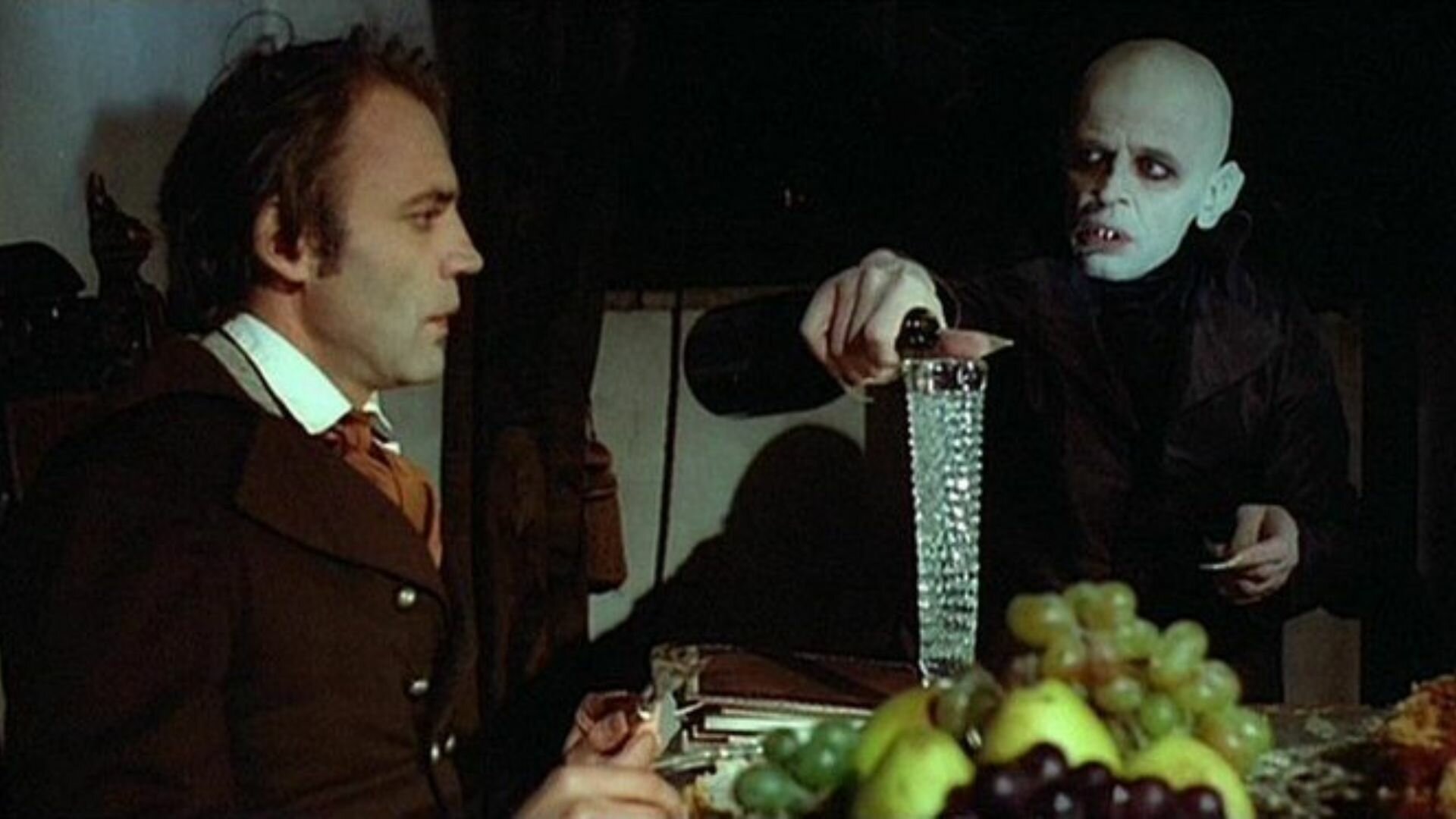The legend of Count Dracula, the vampire king, has captivated the imaginations of people for centuries. With his sharp fangs, blood-red eyes, and insatiable hunger for human blood, Dracula has become a symbol of horror, seduction, and power. To fully understand the origins of Dracula, we must go back in time to the late 15th century. In what is now Romania, there was a man named Vlad the third, also known as Vlad the Impaler. Vlad was a ruler of Wallachia, a region that was constantly under attack from the Ottoman Empire. Vlad was known for his ruthlessness in defending his land, often impaling his enemies as a warning to others. His reputation for cruelty earned him the nickname “Vlad Tepes,” which means “Vlad the Impaler” in Romanian.
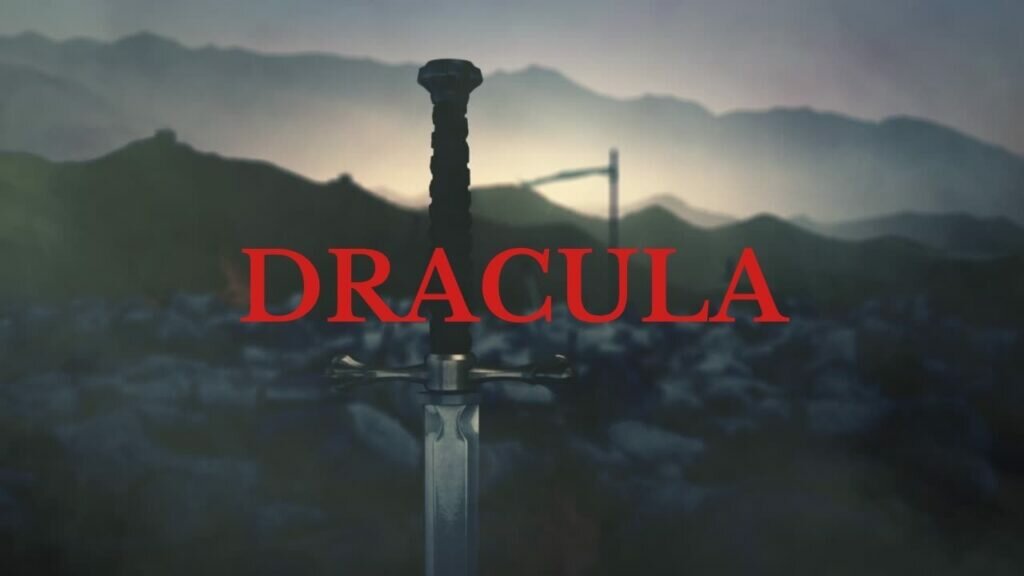
Over time, the stories of Vlad’s brutality began to spread throughout Europe, and he became known as a legendary figure of horror. Bram Stoker, an Irish author, drew inspiration from these tales when he wrote his famous novel “Dracula” in 1897. Stoker’s Dracula was a mysterious and seductive vampire who could shape-shift into a bat and control the minds of his victims. The novel was an instant success and helped establish the modern vampire genre.
Since then, the legend of Dracula has continued to evolve and adapt to changing times. In the early 20th century, Dracula was portrayed in the film as a suave and sophisticated aristocrat, with actors like Bela Lugosi and Christopher Lee becoming synonymous with the character. In the 1970s, the Hammer Horror film studio produced a series of Dracula films, with actor Christopher Lee portraying the Count as a more brutish and violent character.
In more recent times, Dracula has been depicted in a variety of ways, from the romantic and brooding vampire of Anne Rice’s “Interview with the Vampire” to the violent and monstrous Count in the television series “Castlevania.” The vampire genre itself has also evolved, with authors and filmmakers exploring new themes, such as the morality of immortality and the dangers of unchecked power.
But why has the Dracula legend endured for so long? One reason may be that vampires are timeless symbols of our deepest fears and desires. Vampires represent the allure of immortality and the fear of death, the seduction of forbidden desires, and the danger of losing control. They are creatures that straddle the line between life and death, good and evil, and humanity and monstrosity.
Dracula remains a potent and enduring figure of popular culture. Whether we see him as a romantic hero or a monstrous villain, the vampire king continues to fascinate and terrify us with his dark power.
Portrayals of Count Dracula on film and television.

Here are ten actors who have portrayed Count Dracula in the past and who could be good fits for the role in the future:
Gary Oldman – Known for his performance as Dracula in Francis Ford Coppola’s 1992 film “Bram Stoker’s Dracula.”
Gary Oldman is a legendary actor known for his chameleonic ability to disappear into his roles, but perhaps none have been as iconic as his portrayal of the titular character in Francis Ford Coppola’s 1992 film “Bram Stoker’s Dracula.” Oldman’s performance as the seductive and terrifying vampire king was nothing short of mesmerizing, earning him critical acclaim and cementing his place in the pantheon of great actors.
From the moment Oldman appears on screen as Dracula, it is clear that this is not going to be a typical horror movie. With his flowing hair, regal costume, and hypnotic gaze, Oldman exudes a raw sensuality and charisma that is impossible to resist. His performance is a masterclass in the art of seduction, as he draws in his victims with a mixture of charm, humor, and menace.
But Oldman’s performance is not just about sex appeal. He also brings a deep humanity to the character of Dracula, exploring the vampire’s inner torment and loneliness. In one of the film’s most powerful scenes, Oldman’s Dracula weeps as he recounts the loss of his beloved wife, revealing a vulnerability and sadness that is both poignant and disturbing.
Oldman’s performance is also a tour de force of physicality, as he transforms himself into a variety of creatures throughout the film. Whether he is crawling up the walls like a spider or transforming into a bat, Oldman brings a visceral intensity to every moment of the film. His physicality is matched only by his vocal performance, as he delivers some of the film’s most memorable lines with hypnotic intensity.
In the end, Oldman’s performance as Dracula is a testament to his versatility and range as an actor. He is able to channel both the seductive charm of a classic Hollywood leading man and the dark intensity of a horror icon. He is able to convey both the beauty and the horror of the vampire myth, blurring the lines between good and evil in a way that is both unsettling and fascinating.
In conclusion, Gary Oldman’s performance as Dracula in Francis Ford Coppola’s 1992 film “Bram Stoker’s Dracula” is a true masterpiece of acting. With his sensual charisma, raw physicality, and emotional depth, Oldman brings humanity and complexity to the character that is rarely seen in horror movies. His performance is a testament to his talent and his ability to disappear into his roles, and it remains one of the most iconic portrayals of Dracula to this day.
Christopher Lee – Famous for his role as Dracula in several Hammer Horror films from the 1950s to the 1970s.
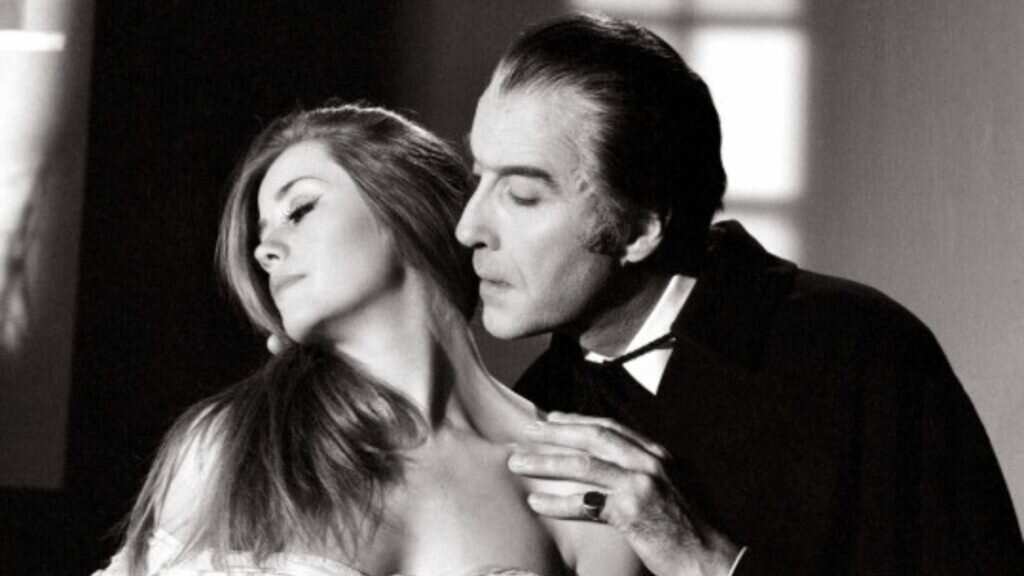
The image of Dracula has been etched into popular culture for decades, with countless actors donning the iconic cape and fangs to bring the Count to life on the big screen. One such actor who is synonymous with the role is Christopher Lee, known for his portrayal of the bloodthirsty vampire in a series of Hammer Horror films from the 1950s to the 1970s.
Lee’s take on Dracula was a departure from previous interpretations, imbuing the character with a menacing presence and a chillingly seductive charm. With his towering height, piercing gaze, and rich baritone voice, Lee commanded attention whenever he appeared on screen, exuding an air of otherworldly power and mystique.
But what made Lee’s portrayal of Dracula stand out was his ability to convey the Count’s inner turmoil and conflicted nature. Despite his outwardly fearsome persona, Lee’s Dracula was a complex and multi-layered character, driven by a burning desire for love and acceptance in a world that had rejected him.
Lee’s Dracula was not merely a monster but a tragic figure trapped in a cycle of eternal loneliness and despair. His portrayal of the Count was a masterclass in nuanced acting, showcasing the depth and range of Lee’s talent as a performer.
The Hammer Horror films in which Lee played Dracula became instant classics, and his performance helped to establish the character as an enduring icon of horror cinema. Lee’s legacy as Dracula has continued to influence pop culture to this day, with countless adaptations and interpretations of the character drawing inspiration from his portrayal.
In the end, Christopher Lee’s performance as Dracula was more than just a role – it was a defining moment in horror cinema that cemented his place as one of the genre’s greatest icons. His legacy lives on, a testament to the power of great acting and the enduring appeal of one of the most iconic characters in literary history.
Bela Lugosi – Known for his iconic portrayal of Dracula in the 1931 film “Dracula” and for popularizing the character in the public imagination.
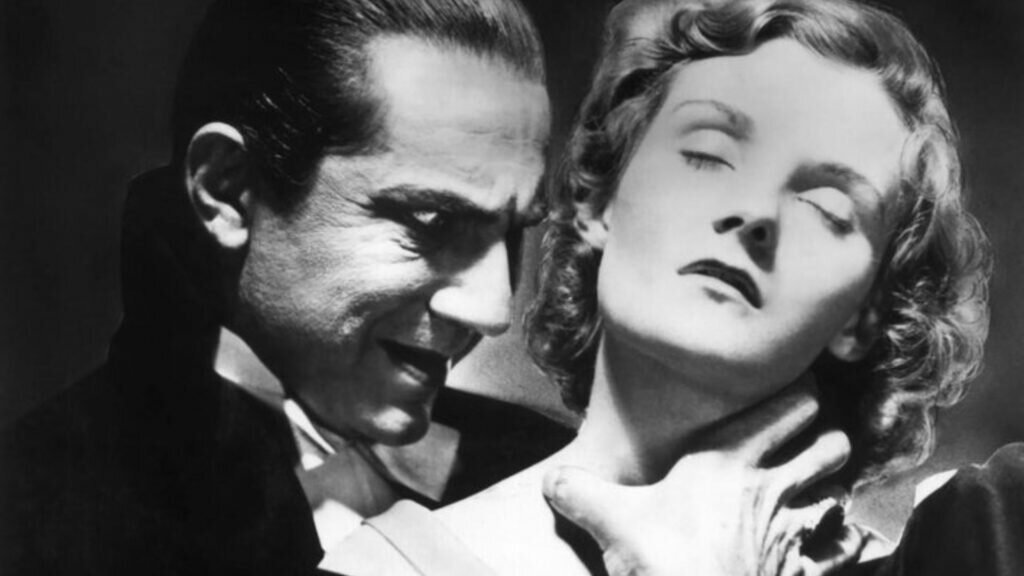
Bela Lugosi is a name that is synonymous with the character of Count Dracula. His portrayal of the iconic vampire in the 1931 film “Dracula” is considered a classic and has influenced countless other vampire portrayals in movies and literature since then. But what made Lugosi’s performance so special? What was it about his portrayal of the vampire that captured the imaginations of audiences and has endured for so long?
One of the key factors that contributed to Lugosi’s success in the role was his unique combination of charm and menace. Lugosi’s Dracula was not just a monster but a suave and sophisticated one at that. His deep voice, accented speech, and piercing eyes all contributed to creating an aura of danger and intrigue around the character.
Lugosi also brought a certain vulnerability to the role, which helped to humanize the character and make him more relatable to audiences. While Dracula was certainly a dangerous and evil creature, Lugosi’s portrayal hinted at a deeper, more complex character lurking beneath the surface.
Another key factor that contributed to Lugosi’s success in the role was his physicality. He moved with a deliberate, almost hypnotic grace that made his portrayal of Dracula all the more compelling. His use of subtle facial expressions and body language helped to create an eerie and unsettling atmosphere that added to the overall sense of terror and dread.
But perhaps most importantly, Lugosi’s performance as Dracula was one of the first of its kind. He popularized the character in the public imagination, setting the stage for countless other vampire portrayals in the years and decades to come. His influence can be seen in everything from Bram Stoker’s original novel to modern-day TV shows like “True Blood” and “The Vampire Diaries.”
In conclusion, Bela Lugosi’s portrayal of Count Dracula in the 1931 film “Dracula” is a performance that has stood the test of time. His unique combination of charm, menace, vulnerability, and physicality helped to create a character that has captured the imaginations of audiences for nearly a century. Lugosi’s influence can be felt in countless other vampire portrayals in movies and literature, and his legacy as one of the greatest horror icons of all time is secure.
Max Schreck – Known for his portrayal of Count Orlok in the classic 1922 silent film “Nosferatu.”
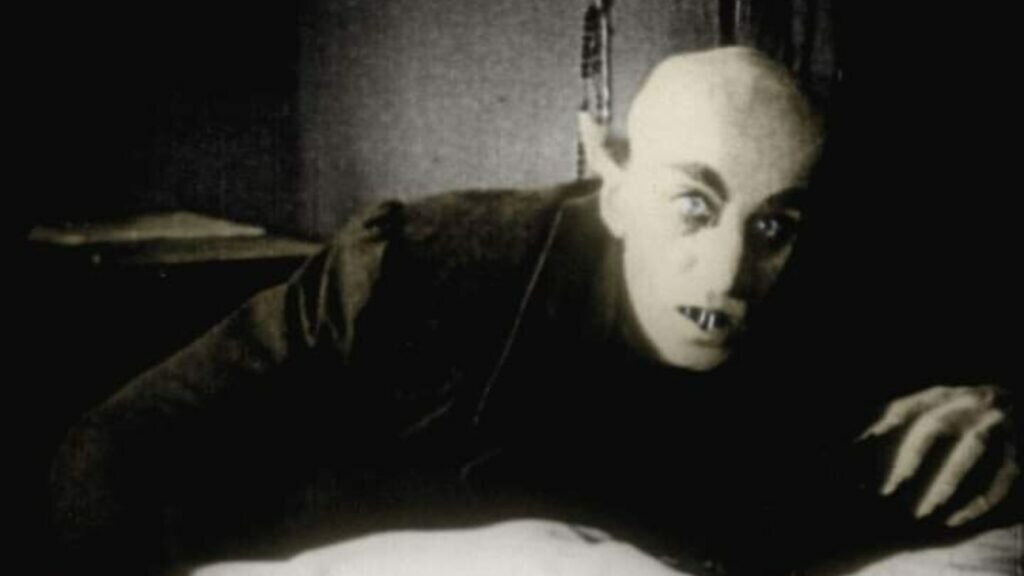
When it comes to the portrayal of vampires in cinema, there are few characters more iconic than Dracula. And while Bela Lugosi, Christopher Lee, and Gary Oldman have all delivered memorable performances as the Count, there is one actor who stands out as particularly haunting and enigmatic: Max Schreck.
Schreck’s portrayal of the vampire in the 1922 film “Nosferatu” is often considered one of the greatest performances in horror movie history. But what makes Schreck’s Dracula so unique, and how did he bring such a terrifying character to life on screen?
One of the key factors in Schreck’s performance is his use of body language. With his hunched posture, elongated fingers, and predatory movements, Schreck’s Dracula is a creature of pure menace and malevolence. His every gesture and expression conveys a sense of otherworldly power and depravity, making it clear that he is not a mere mortal but a supernatural being beyond human comprehension.
Another aspect of Schreck’s performance that sets it apart from other portrayals of Dracula is his use of makeup and prosthetics. Schreck’s makeup is subtle and understated, emphasizing the inhumanity of his features without resorting to the exaggerated, almost cartoonish appearance of later vampire films. His elongated ears, pointed nose, and elongated teeth all serve to make him appear more animal than human, while his pale skin and sunken eyes give him a ghostly, ethereal quality that is both beautiful and terrifying.
But perhaps the most striking aspect of Schreck’s performance is his use of silence. As a silent film actor, Schreck was not able to rely on dialogue or voice to convey his character’s emotions and motivations. Instead, he had to rely on his body language and facial expressions to communicate his character’s inner turmoil and desires. This forced Schreck to adopt a more subtle and nuanced approach to his performance, one that relied on the power of suggestion and implication rather than explicit statements or actions.
The result is a performance that is both hypnotic and unsettling, drawing the audience into Schreck’s world of shadows and mystery and leaving them unsure of what horrors may lurk just beyond the edge of the frame.
Of course, Schreck’s performance as Dracula is just one element of the film that has made “Nosferatu” such an enduring classic. The haunting cinematography, eerie score, and unsettling atmosphere all contribute to the film’s enduring legacy, cementing it as a landmark achievement in the history of horror cinema.
But it is Schreck’s portrayal of Count Orlok that truly stands the test of time, a timeless reminder of the power of cinema to conjure nightmares and evoke the darkest aspects of the human psyche. So the next time you find yourself alone in the dark, remember the name Max Schreck and be thankful that he was never truly able to leave his role as the vampire Count Orlok behind.
Jonathan Rhys Meyers – Portrayed Dracula in the short-lived NBC television series “Dracula” in 2013.
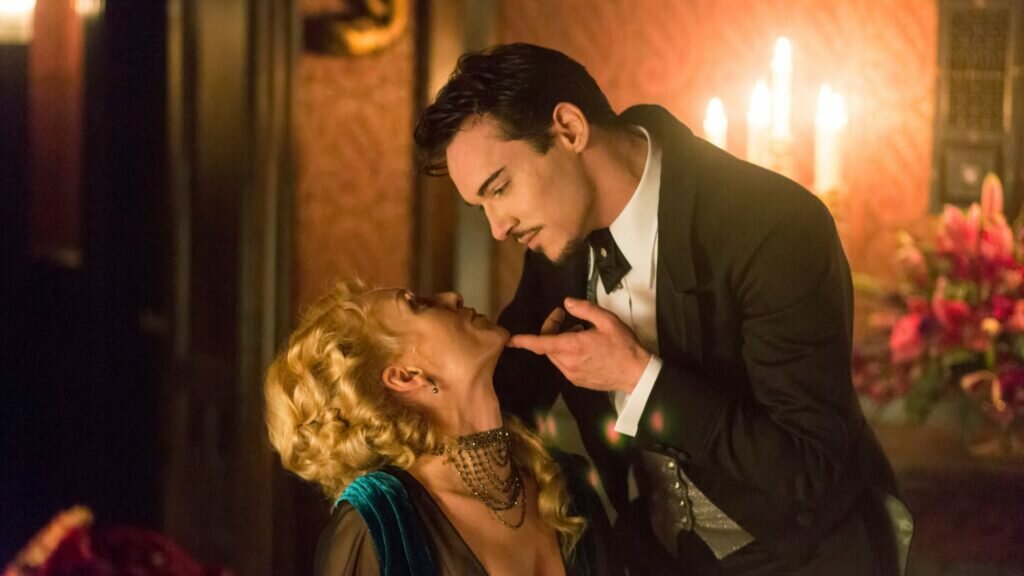
Jonathan Rhys Meyers, a skilled and versatile actor, is best known for his performance as King Henry VIII in the hit television series “The Tudors.” However, in 2013, he took on a completely different role, that of the iconic vampire Dracula.
Playing the role of Dracula requires more than just a pale complexion and fangs. It requires a deep understanding of the character’s motivations and desires. In Meyers’ portrayal, he brought a sense of humanity to the legendary monster, emphasizing his longing for love and acceptance. Meyers’ Dracula was a complex figure, capable of both intense rage and deep compassion.
Meyers’ performance was not without controversy, as some fans of the original Bram Stoker novel felt that his portrayal was too far removed from the source material. However, Meyers’ take on the character was unique and compelling, providing a fresh perspective on one of the most famous villains in cinematic history.
One of the most impressive aspects of Meyers’ performance was his ability to balance the darker elements of the character with moments of vulnerability and tenderness. He seamlessly moved between brooding intensity and moments of emotional depth, creating a character that was as captivating as he was terrifying.
Meyers’ portrayal of Dracula was also notable for his physical transformation. Throughout the series, he undergoes a stunning metamorphosis from a decrepit old man into a handsome, charismatic young prince. This transformation underscores the themes of transformation and renewal that are central to the character of Dracula.
Of course, no portrayal of Dracula would be complete without the signature accent and mannerisms. Meyers’ take on the character was both refined and menacing, with a voice that dripped with charm and danger. He brought a level of sophistication and elegance to the role, making Dracula a more complex and multi-dimensional character than ever before.
In conclusion, Jonathan Rhys Meyers’ portrayal of Dracula in the 2013 NBC television series was a bold and inventive take on one of cinema’s most iconic villains. His performance was a masterclass in nuance and subtlety, showcasing his range as an actor and his ability to inhabit complex characters. Meyers’ Dracula was more than just a monster; he was a tragic figure, torn between his desire for love and his need for blood. Meyers’ portrayal was both mesmerizing and terrifying, cementing his place as one of the most memorable actors ever to take on the role of Dracula.
Luke Evans – Played Dracula in the 2014 film “Dracula Untold.”
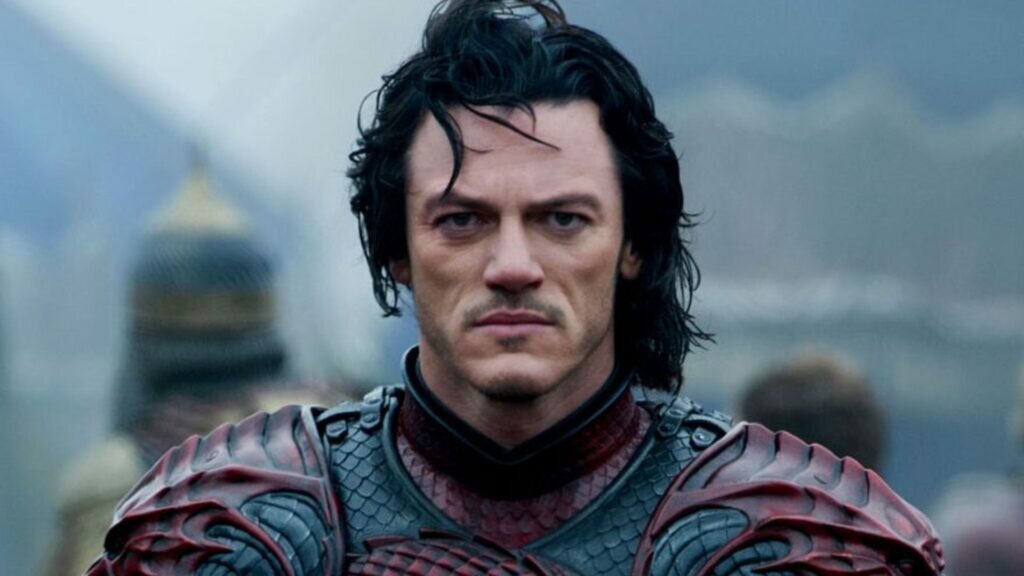
As the sun sets and darkness falls, a chill runs down your spine. Suddenly, a figure emerges from the shadows, and fangs bared, ready to sink into your neck. The legendary vampire who has haunted our imaginations for generations, this time played by Luke Evans.
Luke Evans, the Welsh actor known for his work in films such as “The Hobbit” and “Beauty and the Beast,” took on the role of Dracula in the 2014 film “Dracula Untold.” But how did he fare in bringing this iconic character to life?
At first glance, Evans seems to fit the bill perfectly. With his chiseled jawline and piercing gaze, he exudes a certain gravitas that befits the Prince of Darkness. But playing Dracula is no easy feat – it requires a delicate balance of suavity and menace, of seduction and terror.
Evans manages to capture this duality in his portrayal of the character. On the one hand, he is charming and debonair, wooing his beloved Mirena with words of love and devotion. But on the other hand, he is also ruthless and brutal, unleashing his powers of darkness to vanquish his enemies.
What makes Evans’ performance particularly intriguing is the way in which he manages to infuse the character with a sense of tragedy. We see Dracula as a man who has been pushed to the brink, forced to make difficult choices in order to protect his people and his family. He is a hero and a villain, a savior, and a destroyer all at once.
But it’s not just Evans’ acting that makes his portrayal of Dracula so compelling. The film itself is a masterclass in visual storytelling, with sweeping vistas and epic battle scenes that transport us to a world of magic and menace. The score, too, is haunting and evocative, adding to the film’s atmosphere of dread and foreboding.
Of course, no discussion of Dracula would be complete without mentioning the character’s iconic look – the slicked-back hair, the black cape, and the sharp fangs. Evans certainly looks the part, but he also brings his own unique spin to the character’s appearance. His Dracula is sleek and modern, with a hint of danger lurking just beneath the surface.
All in all, Luke Evans’ portrayal of Dracula in “Dracula Untold” is a worthy addition to the canon of actors who have taken on this iconic role. With his mix of suavity, menace, and tragedy, he manages to capture the essence of the character in a way that is both captivating and terrifying. So the next time you find yourself in the darkness, keep an eye out for the Prince of Darkness – and hope that Luke Evans isn’t lurking in the shadows.
Frank Langella – Played Dracula in the 1979 film “Dracula” and on Broadway.
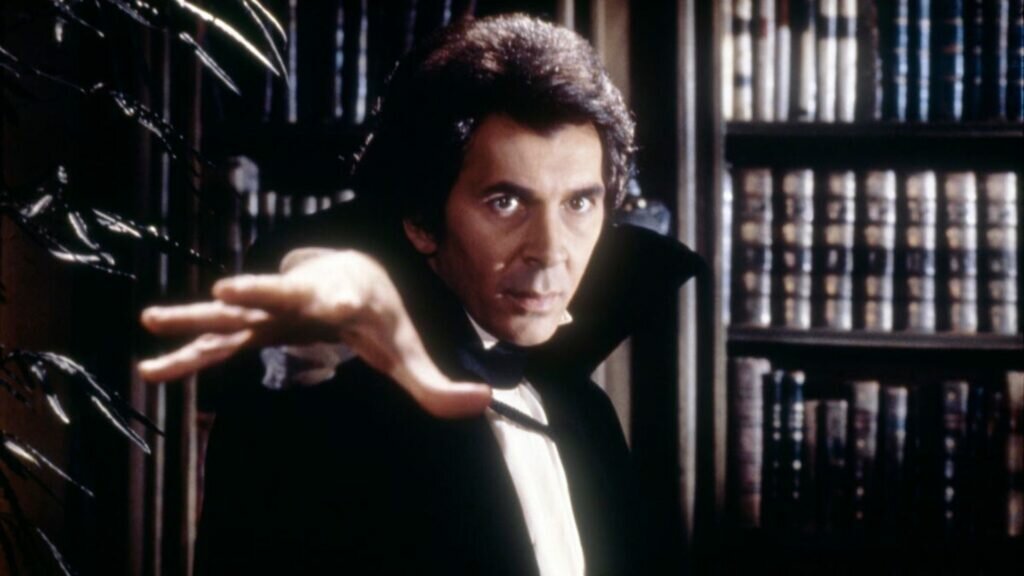
The tale of the infamous Count Dracula has been portrayed on stage and screen numerous times over the years. Still, few performances have captured the imagination quite like Frank Langella’s portrayal in the 1979 film “Dracula” and on Broadway.
Langella’s interpretation of the character was a departure from the more traditional interpretations that had come before. He brought a suave and seductive quality to the role that was both captivating and chilling. His portrayal was both mysterious and alluring, drawing audiences into the world of the undead.
In the film, Langella’s Dracula is a dark and brooding figure dressed in a black cape with a shock of white hair. His piercing eyes seemed to penetrate the soul of anyone who dared to look into them. His voice was deep and commanding, sending shivers down the spines of his victims.
But it wasn’t just Langella’s physicality that made his portrayal so memorable. He infused the character with a sense of romanticism that was both unexpected and enthralling. His Dracula was a tragic figure, cursed to live an immortal life alone and yearning for the love of a mortal woman. He was both terrifying and sympathetic, making audiences root for him even as he preyed upon the innocent.
On Broadway, Langella’s Dracula was just as mesmerizing. His performance was a masterclass in physicality, with every movement and gesture imbued with a sense of danger and seduction. His stage presence was so commanding that he was able to hold audiences in the palm of his hand, even in the largest of theaters.
The success of Langella’s performance was due in part to his ability to tap into the darker aspects of the character. He brought a sense of danger and unpredictability to the role that made audiences fear for the safety of the characters on stage. But he also brought a sense of vulnerability that made the character more relatable, despite his monstrous nature.
Langella’s portrayal of Dracula was a game-changer for the character, paving the way for more nuanced and complex interpretations in the years to come. His performance was a masterclass in acting, showcasing his range and versatility as an actor. He will forever be remembered as one of the greatest actors ever to take on the role of the legendary vampire.
In conclusion, Frank Langella’s portrayal of Dracula in the 1979 film and on Broadway is a standout performance that has stood the test of time. His ability to blend suave and seductive qualities with a sense of danger and unpredictability made his interpretation of the character unforgettable. He brought a sense of vulnerability to the role that made the character more relatable and sympathetic. Langella’s performance will forever be remembered as one of the greatest portrayals of Count Dracula in history.
Klaus Kinski – Known for his portrayal of Dracula in Werner Herzog’s 1979 film “Nosferatu the Vampyre.”
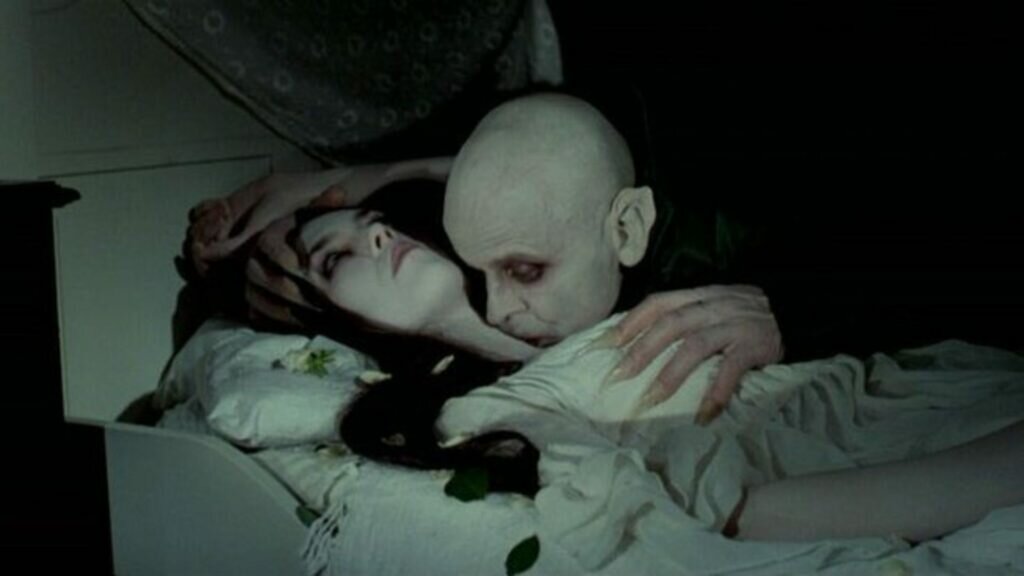
When it comes to the world of vampires, there is perhaps no character more iconic than Count Dracula. From Bram Stoker’s classic novel to the countless films and television shows that have followed, the bloodthirsty Count has captured the imagination of generations. One actor who left an indelible mark on the role of Dracula is Klaus Kinski, known for his portrayal of the infamous vampire in Werner Herzog’s 1979 film “Nosferatu the Vampyre.”
At first glance, Kinski might seem an unlikely choice to play the Count. With his gaunt features and wild hair, he looks more like a madman than a suave, sophisticated aristocrat. Yet it is precisely this unconventional quality that makes his performance so compelling. Kinski brings a raw intensity to the role, imbuing Dracula with a sense of menace and unpredictability that is both chilling and mesmerizing.
As we watch Kinski’s Dracula stalk his prey through the shadowy streets of 19th-century Germany, we cannot help but be drawn into his hypnotic presence. He moves with a sinuous grace, his eyes ablaze with a fierce hunger that seems to transcend mere bloodlust. There is a sense of longing in his gaze, a yearning for something that goes beyond mere survival. It is this complexity that sets Kinski’s portrayal apart from other actors who have tackled the role.
But what is it about Kinski’s performance that makes it so mesmerizing? One factor is undoubtedly his use of body language. Unlike other actors who have played Dracula as suave and sophisticated, Kinski’s Count is feral and animalistic. He slithers across the screen like a serpent, his movements both graceful and unsettling. It is as if he is not quite human, as if he has tapped into some primal, otherworldly energy that gives him a supernatural edge.
Another factor is Kinski’s voice. His German accent lends a sense of exoticism to the role, while his gravelly, guttural delivery imbues his lines with a sense of power and authority. When he speaks, we are compelled to listen, drawn in by the sheer force of his presence.
But perhaps the most important factor is Kinski’s willingness to commit to the role fully. He throws himself into the performance with abandon, embracing the darkness and intensity of the character. It is this dedication that allows him to fully inhabit the role, to become the Count in a way that few actors have been able to match.
Of course, it is not just Kinski’s performance that makes “Nosferatu the Vampyre” such a memorable film. Herzog’s direction is masterful, creating a moody, atmospheric world that is both beautiful and foreboding. The film’s haunting score, composed by Popol Vuh, adds to the sense of unease, creating a sonic landscape that is both haunting and hypnotic.
But at the heart of the film is Kinski’s performance as Dracula. Through his portrayal of the Count, he taps into something primal and eternal, something that transcends time and space. He reminds us of the power of storytelling, of the way that a great actor can transport us to another world and make us believe in the impossible. In the end, Kinski’s Dracula is not just a monster but a complex, fascinating character who lingers in our minds long after the film has ended.
In conclusion, Klaus Kinski’s portrayal of Dracula in “Nosferatu the Vampyre” is a masterclass in acting. Through his use of body language, voice, and sheer commitment to the role, he creates a character that is both terrifying and alluring. His performance reminds us of the power of storytelling, of the way that a great actor can breathe life into even the most iconic of characters. It also speaks to the importance of taking risks and embracing the unconventional.
Kinski’s casting as Dracula might have seemed odd on paper, but it ultimately proved to be a stroke of genius. But beyond the technical aspects of his performance, there is something else that makes Kinski’s portrayal of Dracula so powerful. It is the way that he taps into the deep, primal fears that lurk within us all. Vampires have long been a symbol of our fear of death, of the unknown, of the darkness that lies just beyond the edge of our understanding.
Kinski’s performance brings these fears to the surface, reminding us of the fragility of our own mortality and the power that lies beyond our control. In this sense, Kinski’s Dracula is more than just a character in a film. He is a symbol of the human condition, of our endless fascination with death and the supernatural. By embracing the darkness within himself, Kinski taps into a part of the human experience that is both timeless and universal.
So what is it about Kinski’s portrayal of Dracula that has made it endure for over four decades? It is a combination of factors, from his physicality to his voice to his sheer commitment to the role. But perhaps the most important factor is the way that he taps into something deeper, something that speaks to the very core of what it means to be human. In the end, it is this raw, primal power that makes Kinski’s performance so unforgettable and that cements his place as one of the greatest actors of his generation.
Gerard Butler – Played Dracula in the 2000 film “Dracula 2000.”
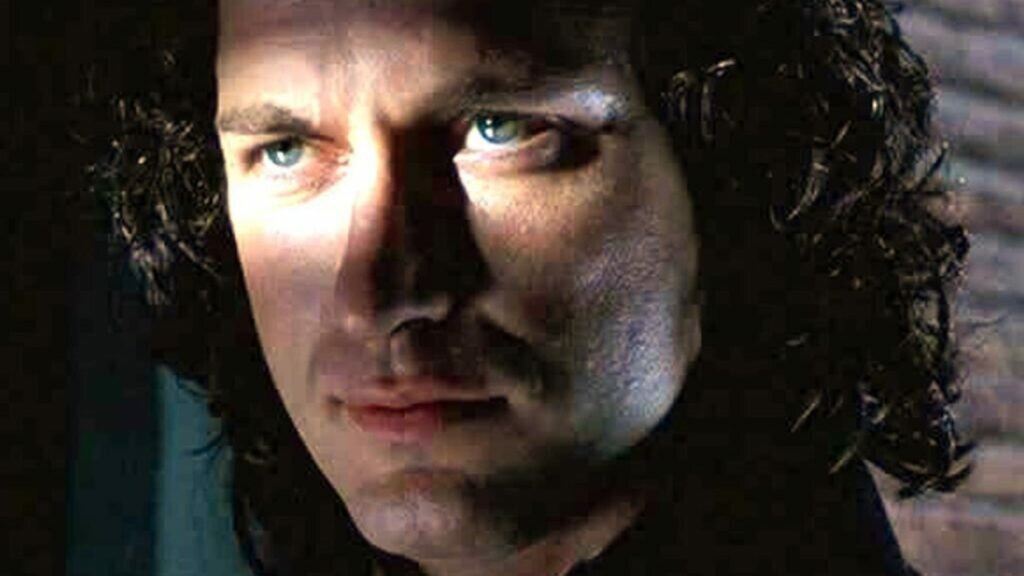
When it comes to iconic movie monsters, few can compare to the allure and terror of Dracula. For over a century, this legendary vampire has captured the imagination of audiences around the world, inspiring countless adaptations and reinterpretations. And in the year 2000, Scottish actor Gerard Butler stepped into the role, playing the titular character in the horror film “Dracula 2000.”
Butler’s portrayal of Dracula was met with mixed reviews at the time, with some critics praising his intensity and charisma while others criticized his lack of depth and nuance. So what is it about Butler’s performance that makes it worth revisiting more than two decades later? And how does it stack up against other actors who have tackled this iconic role?
One of the most striking things about Butler’s Dracula is the way that he embodies both the seductive allure and the fearsome power of the vampire. From his piercing gaze to his hypnotic voice, Butler exudes a raw sexuality that makes it easy to see how his character is able to ensnare his victims. But at the same time, he is also a creature of unspeakable violence, capable of brutal acts of carnage and destruction. It is this duality that makes Butler’s portrayal so compelling and that cements his place as one of the more memorable Draculas in recent memory.
Butler’s physicality is also worth noting. As a former athlete and bodybuilder, he brings a physical presence to the role that is both imposing and graceful. He moves with a fluidity that suggests both the elegance of a nobleman and the predatory instincts of a hunter. And when he unleashes his full strength, he is a force to be reckoned with, capable of tearing through his enemies with frightening ease.
But perhaps the most interesting thing about Butler’s portrayal of Dracula is the way that he injects a sense of humanity into the character. In many adaptations of the story, Dracula is portrayed as a soulless monster driven only by his thirst for blood and his desire for power. But Butler’s version is different. He is haunted by his past, tormented by his own immortality, and driven by a sense of loss and longing that makes him more sympathetic than some of his predecessors.
Of course, it would be remiss to talk about Gerard Butler’s performance without acknowledging its flaws. Some critics have pointed out that his portrayal can be a bit one-note at times, lacking the depth and nuance that other actors have brought to the role. And the film itself has been criticized for its reliance on cliches and tired horror tropes.
But in the end, it is hard to deny the impact that Butler’s Dracula has had on the genre. With his smoldering intensity, his physical prowess, and his ability to evoke both fear and sympathy, he has left his mark on this iconic character and on the horror genre as a whole. And for fans of the vampire mythos, his portrayal is definitely worth revisiting.
Alexander Skarsgård – Could be an interesting choice for the role, as he has played other charismatic and complex characters in the past.

When it comes to casting the perfect Dracula, many actors come to mind. From the suave and debonair to the terrifying and monstrous, the role of the infamous vampire has been portrayed by a wide variety of actors throughout the years. And yet, there is one actor who could be the perfect choice for the role: Alexander Skarsgård.
Skarsgård, best known for his role as the brooding vampire Eric Northman on HBO’s “True Blood,” has proven himself to be a talented actor capable of portraying complex and charismatic characters. His ability to convey a sense of danger and sensuality is a perfect fit for the role of Dracula.
One of the reasons why Skarsgård would make an excellent Dracula is his ability to balance the character’s complexity.
Dracula is not simply a monster but a complex character with a rich history and motivations. Skarsgård has proven himself to be skilled at portraying complex characters in the past, such as his role in the critically acclaimed miniseries “Big Little Lies.” In that show, he played the charming and manipulative Perry Wright, a character with a dark and violent past. Skarsgård’s ability to balance Perry’s charm and violence could be the perfect combination for portraying the layered character of Dracula.
Another reason why Skarsgård would be perfect for the role of Dracula is his physicality. Dracula is a character that is both alluring and terrifying, and Skarsgård has the physical presence to embody both aspects of the character. Standing at 6’4″ with striking features and a chiseled physique, Skarsgård has a commanding presence that could make him the perfect fit for the iconic role.
But it’s not just his physical presence that makes Skarsgård a great choice for the role. He also has the acting chops to bring the character to life in a way that is both captivating and nuanced. Dracula is a character that requires a delicate balance of power, vulnerability, and seduction, and Skarsgård has the range to deliver on all fronts. His performance as Eric Northman on “True Blood” was a masterclass in balancing these qualities, and he could bring that same level of depth and nuance to the role of Dracula.
In conclusion, Alexander Skarsgård would make an excellent choice for the role of Dracula. With his ability to balance the character’s complexity, physicality, and acting chops, he could bring a fresh and exciting take on the iconic vampire. Whether he chooses to play Dracula as a seductive charmer or a monstrous villain, Skarsgård has the talent to make the character his own and leave audiences captivated by his performance.
As an Amazon Associate, I earn from qualifying purchases that help keep this content free.

Unveiling the Mysteries of Dracula: FAQ Guide to the Iconic Vampire Character
Q: Who is Dracula? A: Dracula is a fictional character created by Bram Stoker in his 1897 novel “Dracula.” He is a centuries-old vampire who preys on humans to sustain his immortality.
Q: Where does Dracula come from? A: Dracula was originally created by Bram Stoker, an Irish author, in his novel “Dracula.” The character was inspired by real-life figures like Vlad the Impaler and Elizabeth Bathory.
Q: What are Dracula’s powers? A: Dracula is a vampire, so he possesses a variety of supernatural powers, including superhuman strength, speed, and agility, as well as the ability to transform into a bat, mist, or wolf. He can also control other creatures of the night, such as bats and wolves, and has the power of hypnosis.
Q: What are Dracula’s weaknesses? A: Dracula is vulnerable to sunlight, which can weaken or destroy him. He is also repelled by religious symbols, such as crosses and holy water, and can be killed with a wooden stake through the heart.
Q: Is Dracula a real person? A: No, Dracula is a fictional character created by Bram Stoker. However, the character was inspired by real-life figures like Vlad the Impaler and Elizabeth Bathory.
Q: How has Dracula influenced popular culture? A: Dracula has had a significant impact on popular culture, inspiring numerous adaptations in film, television, and literature. He is often seen as the quintessential vampire archetype and has become a symbol of gothic horror.
Q: What is the significance of Dracula in literature? A: Dracula is considered one of the most important works of gothic horror literature. It introduced the character of Dracula, one of the most iconic villains in literary history, and helped popularize the vampire genre.
Q: What are some notable adaptations of Dracula? A: There have been numerous adaptations of Dracula in film and television, including the classic 1931 film “Dracula” starring Bela Lugosi, Francis Ford Coppola’s 1992 film “Bram Stoker’s Dracula,” and the recent BBC/Netflix series “Dracula.” There have also been countless adaptations in literature and theater.

